Product Overview
† commercial product
Hydrochlorothiazide (HCTZ) is a thiazide diuretic used in the management of edema and hypertension. In hypertension, thiazide diuretics are often used as initial therapy, either alone or in combination with other agents. Unlike the loop diuretics, their efficacy is diminished in patients with renal insufficiency. Hydrochlorothiazide also has been used to treat diabetes insipidus and hypercalciuria, although these are not FDA-approved indications. Hydrochlorothiazide was approved by the FDA in 1959.
Thiazide diuretics increase the excretion of sodium, chloride, and water by inhibiting sodium ion transport across the renal tubular epithelium. Although thiazides may have more than one action, the major mechanism responsible for diuresis is to inhibit active chloride reabsorption at the distal portion of the ascending limb or, more likely, the early part of the distal tubule (i.e., the cortical diluting segment). Exactly how chloride transport is impaired is unknown. Thiazides also increase the excretion of potassium and bicarbonate, and they decrease the urinary excretion of calcium and uric acid. Hydrochlorothiazide may be used to reduce hypercalciuria and prevent the recurrence of calcium-containing renal calculi. By increasing the sodium load at the distal renal tubule, hydrochlorothiazide indirectly increases potassium excretion via the sodium-potassium exchange mechanism. Hypochloremia and hypokalemia can cause mild metabolic alkalosis. The diuretic efficacy of hydrochlorothiazide is not affected by the acid-base balance of the patient. Hydrochlorothiazide is not an aldosterone antagonist, and its main action is independent of carbonic anhydrase inhibition.
The antihypertensive mechanism of hydrochlorothiazide is unknown. It usually does not affect normal blood pressure. Initially, diuretics lower blood pressure by decreasing cardiac output and reducing plasma and extracellular fluid volume. Cardiac output eventually returns to normal, plasma and extracellular fluid values return to slightly less than normal, but peripheral vascular resistance is reduced, resulting in lower blood pressure. These diuretics also decrease the glomerular filtration rate, which contributes to the drug’s lower efficacy in patients with renal impairment. The changes in plasma volume induce an elevation in plasma renin activity, and aldosterone secretion is increased, contributing to the potassium loss associated with thiazide diuretic therapy. In general, diuretics worsen LVH and glucose tolerance, and exert detrimental effects on the lipid profile.
Your health care provider needs to know if you have any of these conditions: diabetes; gout; kidney disease or kidney stones; liver disease; pancreatitis; small amount of urine or difficulty passing urine; an unusual or allergic reaction to hydrochlorothiazide, sulfa drugs, other medicines, foods, dyes, or preservatives; breast-feeding. Check your blood pressure as directed. You may need to be on a special diet while taking this medicine: ask your doctor. Contact your healthcare provider if you experience severe diarrhea, vomitting, or excessive sweating. The loss of too much body fluid can make it dangerous for you to take this medicine. You may get drowsy or dizzy. Do not drive, use machinery, or do anything that needs mental alertness until you know how this medicine affects you. This medicine may affect your blood sugar level. If you have diabetes, check with your doctor or health care professional before changing the dose of your diabetic medicine. This medicine can make you more sensitive to the sun. Keep out of the sun or wear protective clothing and use sunscreen. Do not use sun lamps or tanning beds/booths.
Thiazide diuretics, like hydrochlorothiazide, have been associated with a slight increase in serum cholesterol and triglyceride concentrations. Data from long-term studies, however, suggest diuretic-induced cholesterol changes are not clinically significant and do not contribute to coronary heart disease risk.[3]
Thiazide diuretics are contraindicated in patients with known thiazide diuretic hypersensitivity. According to the manufacturer, hydrochlorothiazide is specifically contraindicated in patients with sulfonamide hypersensitivity. Hypersensitivity reactions may occur in patients with or without a history of allergy or bronchial asthma; however, reactions are more likely to occur in patients with such history. Although thiazide diuretics are sulfonamide derivatives, sulfonamide cross-sensitivity has been rarely documented.[4][5][6] Until further data are available, thiazide diuretics should be used with caution in patients with sulfonamide hypersensitivity. Thiazide diuretics do not contain the N4-aromatic amine or the N1-substituent which are present in sulfonamide antibiotics.[7] Non-arylamine sulfonamide derivatives, such as thiazide diuretics, have been proposed to have a lower risk of allergic reactions in patients with sulfonamide allergy, presumably due to lack of an arylamine group at the N4 position (a proposed structural site of action for sulfonamide allergy).[6][7] One large retrospective cohort study has reported that in patients with the presence of an allergic reaction after exposure to a sulfonamide antibiotic, 9.9% had an allergic reaction after receiving a non-antibiotic sulfonamide derivative, while in patients who lacked an allergic reaction after sulfonamide antibiotic exposure, 1.6% had an allergic reaction after administration of a non-antibiotic sulfonamide derivative (adjusted odds ratio 2.8; 95% CI, 2.1-3.7).[8] A causal relationship between sulfonamide hypersensitivity and allergic reactions with non-arylamine sulfonamide derivatives has not been definitively established and remains controversial.[4][5][6][8] In general, patients with a documented sulfonamide allergy are considered to be predisposed for development of allergic drug reactions.[7][8] Also, patients with a history of sulfonamide hypersensitivity or penicillin hypersensitivity who receive hydrochlorothiazide may also be at increased risk for the development of an idiosyncratic reaction resulting in transient myopia and acute angle-closure glaucoma. Discontinue hydrochlorothiazide promptly if this reaction occurs (see Adverse Reactions).[9]
Hydrochlorothiazide-induced fluctuations in serum electrolyte concentration can occur rapidly and precipitate hepatic coma in susceptible patients. Therefore, the drug should be used with caution in patients with hepatic disease.
Hyperglycemia, impaired glucose tolerance, and glycosuria can occur during hydrochlorothiazide therapy, and blood and/or urine glucose levels should be assessed more carefully in patients with diabetes mellitus who are receiving hydrochlorothiazide. Although hyperglycemia did occur, chlorthalidone, a related thiazide diuretic, has been shown to reduce cardiovascular disease events in geriatric, diabetic patients with isolated systolic hypertension.[10] Greater sensitivity to the hypotensive and diuretic effects of hydrochlorothiazide is possible in geriatric patients.
Hydrochlorothiazide should be used cautiously in patients with renal disease such as severe renal impairment or renal failure. Drug-induced hypovolemia can precipitate azotemia in these patients. Therapy should be interrupted or discontinued if renal impairment worsens, as evidenced by an increase in concentrations of BUN or serum creatinine. With the exception of metolazone, thiazide diuretics are considered ineffective when the creatinine clearance is less than 30 ml/minute. Hydrochlorothiazide is contraindicated in patients withanuria.
Patients with pre-existing hypovolemia or hypotension should have their condition corrected before diuretics are initiated. Orthostatic hypotension may occur during treatment with thiazide diuretics like hydrochlorothiazide.[11] Orthostatic hypotension can be exacerbated by concurrent use of alcohol, narcotics, or antihypertensive drugs (see Drug Interactions). Excessive hypotension during thiazide diuretic therapy can result in syncope. An increased risk of falls has been reported for elderly patients receiving thiazide diuretics.[12][13] In addition, the antihypertensive effects of thiazides may be enhanced in other patients predisposed for orthostatic hypotension, including the post-sympathectomy patient.
Thiazide diuretics, like hydrochlorothiazide, have been reported to cause pancreatitis. They should be used with caution in patients with a history of pancreatitis.
Caution should be used when hydrochlorothiazide is administered to patients with gout or hyperuricemia since thiazide diuretics have been reported to reduce the clearance of uric acid.
Hydrochlorothiazide has been reported to activate or exacerbate systemic lupus erythematosus (SLE).
Patients with pre-existing significant hyponatremia, hypokalemia, hypomagnesemia, and/or hypercalcemia should have their electrolyte imbalances corrected before hydrochlorothiazide is initiated. Initiation of thiazide diuretics in patients with electrolyte imbalances such as hypokalemia or hyponatremia can produce life-threatening situations such as cardiac arrhythmias, hypotension, and seizures. Elderly patients are more susceptible to dilutional hyponatremia induced by thiazide diuretics. Hydrochlorothiazide has been shown to increase the urinary excretion of magnesium and potassium. Thiazide diuretics may induce metabolic alkalosis associated with hypokalemia and hypochloremia; this acid/base imbalance is effectively treated with potassium chloride replacement.[14][15] Hydrochlorothiazide can also increase serum calcium concentrations by decreasing excretion of urinary calcium. Patients receiving diuretics should be monitored closely for clinical signs of fluid or electrolyte imbalance.
Photosensitivity has been reported with thiazide diuretics like hydrochlorothiazide.[16] Patients should avoid excessive sunlight (UV) exposure and therapy should be discontinued if phototoxicity occurs.
Thiazides, like hydrochlorothiazide, should be avoided in neonates with jaundice. Thiazide-induced hyperbilirubinemia is greater in this patient population.
The safety and efficacy of hydrochlorothiazide capsules have not been established in neonates, infants, or children.[17] Although hydrochlorothiazide tablets are FDA-approved for use in pediatric patients, there are no well-controlled clinical trials in pediatric patients. Information on dosing in this age group is supported by evidence from empiric use in pediatric patients and published literature regarding the treatment of hypertension in such patients.[18]
Hydrochlorothiazide products are classified in FDA pregnancy risk category B. Many experts reserve the use of diuretics for pregnant patients with cardiac disease or essential hypertension, due to the fact that diuretic use may decrease placental perfusion and the data do not indicate a positive benefit of diuretic use on the outcome of preeclampsia during pregnancy.[19] The pregnancy risk factor for thiazide diuretics increases to category D for those pregnant patients with reduced uteroplacental perfusion (e.g., preeclampsia or intrauterine growth retardation (IUGR).[19][20] In general, the bulk of the evidence does not indicate that thiazide diuretics are teratogenic in the 1st trimester, although, many experts limit their use to the 2nd and 3rd trimesters.[19] Neonatal thrombocytopenia has been reported following maternal use of thiazide diuretics near term; at term, thiazide diuretics have been reported to cross the placenta. Potential risks from thiazide use include electrolyte imbalances in the newborn, pancreatitis, jaundice, or neonatal complications resulting from such maternal complications such as hyperglycemia, electrolyte imbalance, or hypotension.
Thiazide diuretics distribute into breast milk, and it has been recommended by some manufacturers that women not nurse while receiving selected thiazide diuretics. High doses of some thiazide diuretics have been used off-label to suppress lactation, and thus should be used with caution during the establishment of breast-feeding. Some experts consider doses of <= 50 mg to be compatible with breast-feeding. In general, the use of bendroflumethiazide, chlorthalidone, chlorothiazide, and hydrochlorothiazide is considered usually compatible with breast-feeding by the American Academy of Pediatrics, due to lack of noted adverse effects on the nursing infant.[21]
This list may not include all possible contraindications.
Possible interactions include: cholestyramine; colestipol; digoxin; dofetilide; lithium; medicines for blood pressure, diabetes, muscle relaxers; diuretics; steroid medicines. This list may not describe all possible interactions. Give your healthcare provider a list of all the medicines, herbs, non-prescription drugs, or dietary supplements you use. Some items may interact with your medicine.
Electrolyte disturbances (e.g., hypokalemia, hypomagnesemia, hypercalcemia) may occur with administration of thiazide diuretics, increasing the potential for proarrhythmic effects (e.g., torsade de pointes) of arsenic trioxide, cardiac glycosides, dofetilide, or levomethadyl.[22][23][24][25][27] Potassium levels should be within the normal range prior and during administration of these agents. In the absence of electrolyte imbalances, these agents can be used together safely. In a population pharmacokinetic analysis of plasma dofetilide concentrations, the mean dofetilide clearance of dofetilide was 16% lower in patients on thiazide diuretics.
The risk of developing severe hypokalemia can be increased when other hypokalemia-causing agents (e.g., cisplatin, corticosteroids, corticotropin, ACTH, amphotericin B, or glycyrrhizin (found in licorice) are coadministered with hydrochlorothiazide.[22][23] Monitoring serum potassium levels and cardiac function is advised, and potassium supplementation may be required.
Hypokalemia and/or ECG changes associated with loop diuretics or thiazide diuretics can be acutely worsened by beta-agonists, especially when the recommended dose of the beta-agonist is exceeded.[28] Although the clinical significance of these effects is unknown, use caution when coadministering beta-agonists with non-potassium sparing diuretics.
Concomitant administration of hydrochlorothiazide to patients receiving nondepolarizing neuromuscular blockers (e.g., tubocurarine) can cause prolonged neuromuscular blockade due to hydrochlorothiazide-induced hypokalemia.[23] Serum potassium concentrations should be determined and corrected (if necessary) prior to initiation of neuromuscular blockade therapy.
Thiazide diuretics reduce lithium renal clearance and can increase lithium serum concentrations.[23][29] In some cases, thiazide diuretics can be used to counteract lithium-induced polyuria. Lithium dosage should be reevaluated and serum lithium concentrations monitored when a thiazide is added.
Thiazide diuretics can decrease insulin sensitivity thereby leading to glucose intolerance and hyperglycemia. Diuretic-induced hypokalemia may also lead to hyperglycemia. Because of this, a potential pharmacodynamic interaction exists between thiazide diuretics and antidiabetic agents.[23] It appears that the effects of thiazide diuretics on glycemic control are dose-related and low doses can be instituted without deleterious effects on glycemic control.[30] In addition, diuretics reduce the risk of stroke and cardiovascular disease in patients with diabetes.[31] However, patients taking antidiabetic agents should be monitored for changes in blood glucose control if such diuretics are added or deleted. Dosage adjustments may be necessary. Finally, both thiazides and sulfonylureas have been reported to cause photosensitivity reactions; concomitant use may increase the risk of photosensitivity.
Enhanced hyperglycemia is possible during concurrent use of diazoxide and thiazide diuretics.[32]
Hydrochlorothiazide can reduce the renal clearance of amantadine, with subsequent increased serum concentrations and possible toxicity. This interaction has been reported with a combination product of hydrochlorothiazide and triamterene.[33] Since it is unclear which component was responsible for the interaction, caution should be exercised when administering either drug concurrently with amantadine.
NSAIDs can cause sodium and fluid retention as well as increase peripheral vascular resistance. NSAIDs can decrease the diuretic, natriuretic, and antihypertensive actions of diuretics, possibly through inhibition of renal prostaglandin synthesis.[23] Concomitant administration of NSAIDs with diuretics can also increase the risk for renal insufficiency secondary to decreased renal blood flow. Patients should be monitored for changes in the effectiveness of their diuretic therapy and for signs and symptoms of renal impairment. Among NSAIDs, indomethacin, naproxen, and piroxicam may have the greatest pressor effect, while the effects of sulindac and nabumetone may be significantly less.
Concomitant use of medicines with potential to alter renal perfusion or function such as hydrochlorothiazide may increase the risk of acute phosphate nephropathy in patients receiving sodium phosphate monobasic monohydrate; sodium phosphate dibasic anhydrous.[34][35]
Cholestyramine (Questran®), an ion exchange resin, binds hydrochlorothiazide and reduces its absorption from the gastrointestinal tract by up to 85% when co-administered as single doses.[23][36][37] Although the manufacturer for Questran® recommends that other medicines be taken at least 1 hour before or 4-6 hours after cholestyramine, it has been recommended that thiazides be administered at least 4 hours before or after cholestyramine to minimize the reduction in absorption.[37][38] By administering hydrochlorothiazide at least 4 hours before cholestyramine, the decrease in absorption of hydrochlorothiazide is approximately 30-35%. Although to a lesser extent than cholestyramine, colestipol also has been shown to inhibit the GI absorption and therapeutic response of thiazide diuretics. Single doses of colestipol resins reduce the absorption of HCTZ by up to 43%.[23][36] Administering thiazide diuretics at least 2 hours before colestipol has been suggested to minimize the interaction.
Thiazide diuretics may cause photosensitivity and may increase the photosensitization effects of drugs like phenothiazines.[23][39] Prevention of photosensitivity includes adequate protection from sources of UV radiation (e.g., avoiding sun exposure and tanning booths) and the use of protective clothing and sunscreens on exposed skin.[39] Electrolyte disturbances (e.g., hypokalemia, hypomagnesemia, hypercalcemia) may occur with administration of thiazide diuretics, electrolyte disturbances may increase the potential for proarrhythmic effects (e.g., QT prolongation, torsade de pointes) of selected phenothiazines (e.g., mesoridazine, thioridazine).[22] In the absence of electrolyte imbalances, these agents can be used together safely with appropriate monitoring; clinicians should monitor for evidence of electrolyte disturbances or cardiac-related patient complaints. Thiazide diuretics may potentiate the orthostatic hypotension that can be seen with the use of the phenothiazine antipsychotics.[40]
A manufacturer of topical tretinoin states that tretinoin, ATRA should be administered with caution in patients who are also taking drugs known to be photosensitizers, such as thiazide diuretics, as concomitant use may augment phototoxicity. Patients should take care and use proper techniques to limit sunlight and UV exposure of treated areas.[41]
The manufacturer states that tazarotene should be administered with caution in patients who are also taking drugs known to be photosensitizers, such as thiazide diuretics, as concomitant use may augment phototoxicity.[42][43] Patients should take care and use proper techniques to limit sunlight and UV exposure of treated areas.[42][43]
Thiazide diuretics may cause photosensitivity and may increase the photosensitization effects of drugs like griseofulvin, phenothiazines, sulfonamides, sulfonylureas, tetracyclines, or photosensitizing agents used in photodynamic therapy.[23][39] Prevention of photosensitivity includes adequate protection from sources of UV radiation (e.g., avoiding sun exposure and tanning booths) and the use of protective clothing and sunscreens on exposed skin.[39]
The occurrence of hypersensitivity reactions may be increased in patients with renal impairment who receive allopurinol and thiazide diuretics in combination.[44] In addition, thiazide diuretics, like hydrochlorothiazide, can cause hyperuricemia. Since thiazides reduce the clearance of uric acid, patients with gout or hyperuricemia may have exacerbations of their disease.[18]
Hawthorn, Crataegus laevigata may lower peripheral vascular resistance.[45] Hawthorn use in combination with antihypertensive agents may lead to additional reductions in blood pressure in some individuals. Patients receiving hawthorn concurrently with antihypertensive medications should receive periodic blood pressure monitoring.
Drug interactions with Horse chestnut, Aesculus hippocastanum are not well documented. Escin, an active saponin in the horse chestnut seed, appears to have weak diuretic activity, but the exact mechanism is not clear.[46] The effect appears to be dose-dependent and may be additive with traditional diuretics.
Salicylates can increase the risk of renal toxicity in patients receiving diuretics.[47] Salicylates inhibit renal prostaglandin synthesis, which can lead to fluid retention and increased peripheral vascular resistance. Salicylates may decrease the hyperuricemic effect of hydrochlorothiazide.
Ethanol, barbiturates, or opiate agonists may potentiate orthostatic hypotension when used concurrently with hydrochlorothiazide.[23]
Thiazide diuretics can cause decreased arterial responsiveness to vasopressor amines (e.g., norepinephrine), but the effect is not sufficient to preclude their coadministration.[23]
Thiazide diuretics may increase the risk of hypokalemia when used concurrently with methazolamide which may also cause hypokalemia.[22][23][48] Monitor serum potassium levels to determine the need for potassium supplementation and/or alteration in drug therapy. There may also be an additive diuretic or hyperuricemic effect.
Ephedra, Ma huang can antagonize all types of antihypertensive agents. Blood pressure should be monitored closely in patients using antihypertensive agents with ephedra.[49]
Memantine reduced the bioavailability of hydrochlorothiazide by roughly 20% in a drug interaction study.[50] The clinical significance of this pharmacokinetic interaction, if any, is unknown.
The simultaneous administration of thiazide diuretics and calcium salts or calcium carbonate may lead to hypercalcemia. Thiazides cause a decrease in renal tubular excretion of calcium as well as increase in distal tubular reabsorption. Moderate increases in serum calcium have been seen during the treatment with thiazides; if calcium salts are used concomitantly, careful monitoring of serum calcium in recommended.[23]
Additive hypotensive effects may be seen when monoamine oxidase inhibitors (MAOIs) are combined with antihypertensives.[51][52] Careful monitoring of blood pressure is suggested during concurrent therapy of MAOIs with diuretics. Patients should be instructed to rise slowly from a sitting position, and to report syncope or changes in blood pressure or heart rate to their health care provider during concurrent use of an MAOI and hydrochlorothiazide, HCTZ.
Hydrochlorothiazide, HCTZ may decrease the renal clearance of fluconazole. Coadministration of fluconazole 100 mg PO and hydrochlorothiazide 50 mg PO for 10 days in normal volunteers (n=13) resulted in a significant increase in fluconazole AUC and Cmax compared to fluconazole given alone. There was a mean +/- SD increase in fluconazole AUC and Cmax of 45 +/- 31% and 43 +/- 31%, respectively. These changes are attributed to a mean +/- SD reduction in fluconazole renal clearance of 30% +/- 12%.[53]
Use caution when coadministering amiodarone with drugs which may induce hypokalemia and/or hypomagnesemia including thiazide diuretics.[22][54] Since antiarrhythmic drugs may be ineffective or may be arrhythmogenic in patients with hypokalemia, any potassium or magnesium deficiency should be corrected before and during amiodarone therapy.[55]
Both thiazide diuretics and carbamazepine are associated with hyponatremia. Coadministration may result in an additive risk of developing hyponatremia. When concurrent therapy with a thiazide diuretic and carbamazepine is necessary, monitor patients for hyponatremia.[56][57]
Concomitant use of thiazide diuretics and calcitriol in patients with hypoparathyroidism can result in hypercalcemia, which is likely due to the increased release of calcium from the bone.[58] This condition may be transient or require discontinuation of calcitriol. Hypercalcemia was reported in clinical trials with calcitriol ointment (see Adverse Reactions). Use caution if thiazide diuretics and topical calcitriol are coadministered.[59]
Coadministration of thiazides and antimuscarinics (e.g., atropine and biperiden) may result in increased bioavailability of the thiazide. This is apparently a result of a decrease in gastrointestinal motility and rate of stomach emptying by the antimuscarinic agent. Conversely, coadminisitration of thiazides and prokinetic agents may result in decreased bioavailability of the thiazide diuretic.[60]
Coadministration of thiazide diuretics and antineoplastic agents such as cyclophosphamide and methotrexate may result in reduced renal excretion of the antineoplastic agent and therefore increased myelosuppressive effects.[60]
A pharmacokinetic drug interaction study evaluated hydrochlorothiazide, HCTZ 25 mg PO once daily and topiramate (96 mg PO twice a day). Topiramate Cmax increased by 27% and AUC increased by 29% when HCTZ was added to topiramate. The clinical significance of this change is unknown; however, the addition of HCTZ to topiramate therapy may require a reduction in the topiramate dose. Alternatively, the discontinuation of HCTZ therapy may require a dose increase in topiramate. The clinician should be aware of the potential for this interaction and monitor the patient accordingly. The steady-state pharmacokinetics of HCTZ were not altered to any significant degree.[61]
This list may not include all possible drug interactions
Change in sex drive or performance; dry mouth; headache; stomach upset. This list may not describe all possible side effects. Call your health care provider immediately if you are experiencing any signs of an allergic reaction: skin rash or itching, hives, swelling of the lips, mouth, tongue, or throat; changes in vision; chest pain; eye pain; fast or irregular heartbeat; feeling faint or lightheaded, falls; gout attack; muscle pain or cramps; pain or difficulty when passing urine; pain, tingling, numbness in the hands or feet; redness, blistering, peeling or loosening of the skin, including inside the mouth; unusual fatigue.
Adverse GI effects associated with thiazides, like hydrochlorothiazide, include abdominal pain, anorexia, gastric irritation, nausea, vomiting, cramps, diarrhea, constipation, sialadenitis, and pancreatitis.[18]
Adverse CNS effects associated with thiazides, like hydrochlorothiazide, include dizziness, headache, paresthesias, restlessness, and vertigo.[18]
As a result of the mechanism of action of hydrochlorothiazide, polyuria is expected. Patients receiving hydrochlorothiazide should be monitored closely for signs of electrolyte imbalance including hyponatremia, hypokalemia, hypomagnesemia, and hypochloremia.[18] Patients should be aware of the symptoms of these disturbances (e.g., lassitude, mental confusion, fatigue, faintness, dizziness, muscle cramps, tachycardia, headache, paresthesia, thirst, anorexia, nausea, or vomiting), and report these signs immediately. Patients receiving hydrochlorothiazide can develop a dilutional hyponatremia, but it usually is asymptomatic and moderate. Withdrawal of the drug, fluid restriction, and potassium or magnesium supplementation typically will return the serum sodium concentration to normal, but severe hyponatremia can occur. Geriatric patients are especially susceptible to developing hyponatremia, so care should be taken when diuretics are administered to these patients. In addition, thiazide diuretics may induce metabolic alkalosis associated with hypokalemia and hypochloremia; this acid/base imbalance is effectively treated with potassium chloride replacement.[14][15] In addition, hypochloremic alkalosis can occur with hypokalemia during hydrochlorothiazide therapy, and it is particularly likely to occur in patients with other losses of potassium and/or chloride such as through severe vomiting, diarrhea, excessive sweating, GI drainage, paracentesis, or potassium-losing renal diseases. Thiazides also can decrease urinary calcium excretion, resulting in hypercalcemia. Hypokalemia occurs in 30-50% of patients taking thiazide diuretics and can lead to cardiac arrhythmias.[62] This effect is especially important to consider in patients receiving cardiac glycoside therapy because potassium depletion increases the risk of cardiac toxicity. Hyperaldosteronism, secondary to cirrhosis or nephrosis, can predispose patients to hypokalemia when hydrochlorothiazide is administered. Low dietary-potassium intake, potassium-wasting states, or administration of potassium-wasting drugs also can predispose patients to hydrochlorothiazide-induced hypokalemia. Patients receiving hydrochlorothiazide therapy may require supplemental potassium to prevent hypokalemia or metabolic alkalosis.
Complications of thiazide diuretic therapy may include intravascular volume depletion (hypovolemia), with potential for development of prerenal azotemia.[15] Hydrochlorothiazide reportedly has caused azotemia and interstitial nephritis, resulting in renal dysfunction and renal failure (unspecified). These effects have occurred mainly in patients with preexisting renal disease. If progressive renal impairment occurs, consider discontinuing diuretic therapy.[18]
Hydrochlorothiazide can produce glycosuria and hyperglycemia. Latent diabetes mellitus may become manifest during thiazide therapy.[18] Blood and/or urine glucose levels should be assessed more carefully in diabetic patients receiving hydrochlorothiazide.
Hyperuricemia has been reported in up to 40% of men taking thiazide diuretics, like hydrochlorothiazide, and less frequently in women.[62] Thiazide diuretics appear to interfere with proximal tubule secretion of uric acid; because thiazides are organic acids, they compete with uric acid for binding at this site. Because thiazides reduce the clearance of uric acid, acute gout may be precipitated by thiazide diuretics in some patients.[18] Serum uric acid concentrations return to pretreatment concentrations upon discontinuation of therapy.[62]
Hypercholesterolemia and/or hypertriglyceridemia have been associated with thiazide diuretic therapy (e.g., hydrochlorothiazide).[18] Although elevations in total cholesterol concentrations of 8% can negate the protection against coronary heart disease provided by a 5 mmHg reduction in blood pressure,[63] data from long-term studies (i.e., > 1 year duration) using modest doses of diuretics have not shown an increase in serum cholesterol levels.[64] In the ALLHAT trial, although serum cholesterol levels were slightly higher after 4 years in chlorthalidone-treated patients than in those treated with amlodipine or lisinopril (197 mg/dl for chlorthalidone vs. 195.6 mg/dl for amlodipine, p = 0.009, and 195 mg/dl for lisinopril, p < 0.001), the levels were numerically lower compared to baseline for all groups. Additionally, the ALLHAT results demonstrated that chlorthalidone is superior at preventing CVD events compared to amlodipine, lisinopril, and doxazosin. There was also no significant difference between chlorthalidone and the three study drugs in the rate of major coronary heart disease events and all-cause mortality, suggesting that the diuretic-induced cholesterol changes are not clinically significant and do not contribute to coronary heart disease risk.[65]
Hypotension, including orthostatic hypotension, may occur during treatment with hydrochlorothiazide and can be exacerbated by concurrent use of alcohol, narcotics, or antihypertensive drugs.[11][66] Excessive hypotension during thiazide diuretic therapy can result in syncope. An increased risk of falls has been reported for elderly patients receiving thiazide diuretics, like hydrochlorothiaizde.[12][13] In addition, the antihypertensive effects of thiazides may be enhanced in other patients predisposed for orthostatic hypotension, including the post-sympathectomy patient.
Thiazide diuretics, like hydrochlorothiazide, have been associated with intrahepatic cholestatic jaundice (rare).[66] Caution should be used when hydrochlorothiazide is administered to infants at risk for jaundice; thiazide diuretics may displace bilirubin from albumin binding sites.
Agranulocytosis, aplastic anemia, hemolytic anemia, leukopenia, and thrombocytopenia have been reported with hydrochlorothiazide use; however, the incidences are unknown.[18]
General adverse effects reported with hydrochlorothiazide include muscle spasm (muscle cramps), impotence (erectile dysfunction), fever, and weakness.[18]
Adverse dermatologic reactions have been reported with hydrochlorothiazide use. These reactions include purpura, photosensitivity, rash (unspecified), alopecia, urticaria, erythema multiforme including Stevens-Johnson syndrome, and exfoliative dermatitis including toxic epidermal necrolysis (TEN).[18]
Hydrochlorothiazide, a sulfonamide, can cause an idiosyncratic reaction, resulting in transient myopia and acute angle-closure glaucoma. Symptoms include acute onset of decreased visual acuity or ocular pain and typically occur within hours to weeks of drug initiation. Untreated acute angle-closure glaucoma can lead to permanent vision loss. Discontinue hydrochlorothiazide as rapidly as possible and consider prompt medical or surgical treatment if the ocular hypertension remains uncontrolled.[9] Transient blurred vision and xanthopsia have also been reported during hydrochlorothiazide monotherapy.
Anaphylactoid reactions and necrotizing angiitis (vasculitis and cutaneous vasculitis) have occurred with the administration of hydrochlorothiazide (incidence unknown).[18]
Pneumonitis and pulmonary edema have been reported with the use of hydrochlorothiazide (incidence unknown).[18]
This list may not include all possible adverse reactions or side effects. Call your health care provider immediately if you are experiencing any signs of an allergic reaction: skin rash, itching or hives, swelling of the face, lips, or tongue, blue tint to skin, chest tightness, pain, difficulty breathing, wheezing, dizziness, red, a swollen painful area/areas on the leg.
Hydrochlorothiazide products are classified in FDA pregnancy risk category B. Many experts reserve the use of diuretics for pregnant patients with cardiac disease or essential hypertension, due to the fact that diuretic use may decrease placental perfusion and the data do not indicate a positive benefit of diuretic use on the outcome of preeclampsia during pregnancy.[19] The pregnancy risk factor for thiazide diuretics increases to category D for those pregnant patients with reduced uteroplacental perfusion (e.g., preeclampsia or intrauterine growth retardation (IUGR).[19][20] In general, the bulk of the evidence does not indicate that thiazide diuretics are teratogenic in the 1st trimester, although, many experts limit their use to the 2nd and 3rd trimesters.[19] Neonatal thrombocytopenia has been reported following maternal use of thiazide diuretics near term; at term, thiazide diuretics have been reported to cross the placenta. Potential risks from thiazide use include electrolyte imbalances in the newborn, pancreatitis, jaundice, or neonatal complications resulting from such maternal complications such as hyperglycemia, electrolyte imbalance, or hypotension.
Thiazide diuretics distribute into breastmilk, and it has been recommended by some manufacturers that women not nurse while receiving selected thiazide diuretics. High doses of some thiazide diuretics have been used off-label to suppress lactation, and thus should be used with caution during the establishment of breast-feeding. Some experts consider doses of <= 50 mg to be compatible with breast-feeding. In general, the use of bendroflumethiazide, chlorthalidone, chlorothiazide, and hydrochlorothiazide is considered usually compatible with breast-feeding by the American Academy of Pediatrics, due to lack of noted adverse effects on the nursing infant.[21]
Store this medication at 68°F to 77°F (20°C to 25°C) and away from heat, moisture and light. Keep all medicine out of the reach of children. Throw away any unused medicine after the beyond use date. Do not flush unused medications or pour down a sink or drain.
- Welling PG. Pharmacokinetics of the thiazide diuretics. Biopharm Drug Dispos 1986;7:501-35.
- Neimeyer C, Hasenfuss G, Wais U, et al. Pharmacokinetics of hydrochlorothiazide in relation to renal function. Eur J Clin Pharmacol 1983;24:661-5. Abstract.
- Freis ED. Critique of the clinical importance of diurectic-induced hypokalemia and elevated cholesterol level. Arch Intern Med 1989;149:2640-8.
- Sullivan TJ. Cross-reactions among furosemide, hydrochlorothiazide, and sulfonamides. JAMA 1991;265:120-1.
- Knowles S, Shapiro L, Shear NH. Should celecoxib be contraindicated in patients who are allergic to sulfonamides? Revisiting the meaning of “sulfa” allergy. Drug Saf 2001;24:239-247.
- Johnson KK, Green DL, Rife JP, et al. Sulfonamide cross-reactivity: fact or fiction? Ann Pharmacother 2005;39:290-301.
- Verdel BM, Souverein PC, Egberts AC, et al. Difference in risks of allergic reaction to sulfonamide drugs based on chemical structure. Ann Pharmacother 2006;40:1040-6.
- Strom BL, Schinnar R, Apter AJ, et al. Absence of cross-reactivity between sulfonamide antibiotics and sulfonamide nonantibiotics. New Engl J Med 2003;349:1628-35.
- Amturnide (aliskiren; amlodipine; hydrochlorothiazide) package insert. East Hanover, NJ: Novartis; 2014 Mar.
- Curb JD, Pressel SL, Cutler JA, et al. Effect of diuretic-based antihypertensive treatment on cardiovascular disease risk in older diabetic patients with isolated systolic hypertension. JAMA 1996;276:1886-92.
- Poon IO, Braun U. High prevalence of orthostatic hypotension and its correlation with potentially causative medications among elderly veterans. J Clin Pharm Ther 2005;30:173-8.
- American Geriatrics Society, British Geriatrics Society, American Academy of Orthopaedic Surgeons Panel on Falls Prevention. Guideline for the prevention of falls in older persons. J Am Geriatr Soc 2001;49:664-72.
- Leipzig RM, Cumming RG, Tinetti ME. Drugs and falls in older people: a systematic review and meta-analysis: II. Cardiac and analgesic drugs. J Am Geriatr Soc 1999;47:40-50.
- Khanna A, Kurtzman NA. Metabolic alkalosis. Respir Care 2001;46:354-65.
- Greenberg A. Diuretic complications. Am J Med Sci 2000;319:10-24.
- Moore DE. Drug-induced cutaneous photosensitivity: incidence, mechanism, prevention and management. Drug Saf 2002;25:345-72.
- Hydrochlorothiazide capsule package insert. Corona, CA: Watson Pharma, Inc.; 2009 Mar.
- Hydrochlorothiazide package insert. Cranbury, NJ: Aurobindo Pharma USA, Inc.; 2006 Aug.
- Report of the National High Blood Pressure Education Program Working Group on High Blood Pressure in Pregnancy. Am J Obstet Gynecol 2000;183:S1-S22.
- ACOG Committee on Practice Bulletins. Chronic hypertension in pregnancy. Obstet Gynecol 2001;98:suppl 177-85.
- American Academy of Pediatrics (AAP) Committee on Drugs. Transfer of drugs and other chemicals into human milk. Pediatrics 2001;108:776-89.
- Cohn JN, Kowey PR, Whelton PK, Prisant LM. New guidelines for potassium replacement in clinical practice: a contemporary review by the National Council on Potassium in Clinical Practice. Arch Intern Med 2000;160:2429-36.
- HydroDIURIL® (hydrochlorothiazide) package insert. Whitehouse Station, NJ: Merck & Co., Inc.; 1998 Jun.
- CredibleMeds. Drugs to avoid in congenital long QT. Available on the World Wide Web at http://www.crediblemeds.org
- Shapiro, S., et al. The epidemiology of digoxin, a study in three Boston hospitals. J Chron Dis 1969; 22:361.
- Tikosyn™ (dofetilide) package insert. New York, NY: Pfizer Labs; 1999 Dec.
- CredibleMeds Drugs to avoid in congenital long QT. Available on the World Wide Web at http://www.crediblemeds.org
- Proventil® HFA (albuterol sulfate) Inhalational Aerosol package insert. Kenilworth, NJ: Key Pharmaceuticals, Inc.; 2001 Oct.
- Eskalith® (lithium carbonate) package insert. Research Triangle Park, NC: GlaxoSmithKline; 2003 Sept.
- Tsiodras S, Mantzoros C, Hammer S, et al. Effects of protease inhibitors on hyperglycemia, hyperlipidemia, and lipodystrophy: a 5-year cohort study. Arch Intern Med 2000;160(13):2050-2056.
- Lovallo W, Wilson MF, Vincent AS, et al: Blood pressure response to caffeine shows incomplete tolerance after short-term regular consumption. Hypertension 2004;43:760-765.
- American Academy of Pediatrics Committee on Drugs. The transfer of drugs and other chemicals into human milk. Pediatrics 2001;108(3):776-789.
- Wilson TW, Rajput AH. Amantadine-dyazide interaction. Can Med Assoc J 1983;129:974-5.
- Visicol® (sodium phosphate monobasic monohydrate; sodium phosphate dibasic anhydrous) package insert. Morrisville, NC: Salix Pharmaceuticals, Inc.; 2006 Mar.
- Osmoprep® (sodium phosphate monobasic monohydrate; sodium phosphate dibasic anhydrous) package insert. Morrisville, NC: Salix Pharmaceuticals, Inc.; 2006 Mar.
- Hunninghake DB, King S, LaCroix K. The effect of cholestyramine and colestipol on the absorption of hydrochlorothiazide. Int J Clin Pharmacol Ther Toxicol 1982;20:151-4.
- Hunninghake DB, Hibbard DM. Influence of time intervals for cholestyramine dosing on the absorption of hydrochlorothiazide. Clin Pharmacol Ther 1986;39:329-34.
- Questran® and Questran® Light (cholestyramine) package insert. Spring Valley, NY: Par Pharmaceutical Inc; 2002 July.
- Moore DE. Drug-induced cutaneous photosensitivity: incidence, mechanism, prevention and management. Drug Saf 2002;25:345-72. Review.
- Thorazine® (chlorpromazine) package insert. Research Triangle Park, NC: GlaxoSmithKline; 2002 April.
- Renova® 0.05% (tretinoin emollient cream) package insert. Raritan, NJ: Ortho Dermatological; 1998 Feb.
- Tazorac® (tazarotene) gel package insert. Irvine CA: Allergan, Inc.; 1998 Dec.
- Tazorac® (tazarotene) cream package insert. Irvine CA: Allergan, Inc.; 2001 Oct.
- Zyloprim® (allopurinol) package insert. San Diego, CA: Prometheus Laboratories Inc.; 2001 July.
- Blesken R. Crataegus in cardiology. Fortschr Med 1992;110:290-2.
- Rothkopf M, Vogel G, Lang W et al. Animal experiments on the question of the renal toleration of the horse chestnut saponin aescin. Arneimittelforschung 1977;27:598-605.
- Karsh J. Adverse reactions and interactions with aspirin. Considerations in the treatment of the elderly patient. Drug Saf 1990;5:317-27.
- Neptazane® (methazolamide) package insert. Pearle River, NY: Lederle Pharmaceutical Division: 1998 Nov.
- Haller CA, Benowitz NL. Adverse cardiovascular and central nervous system events associated with dietary supplements containing ephedra alkaloids. N Engl J Med 2000;343:1833-8.
- Namenda™ (memantine) package insert. St. Louis, MO: Forest Pharmaceuticals; 2006, March. Namenda™ (memantine) package insert. St. Louis, MO: Forest Pharmaceuticals; 2006, March.
- Nardil® (phenelzine) package insert. New York, NY: Pfizer; 2003.
- Parnate® (tranylcypromine) package insert. Research Triangle Park, NC: GlaxoSmithKline; 2001 Aug.
- Diflucan® (fluconazole) package insert. New York, NY. Pfizer; 2004 Aug.
- Nanji AA. Drug-induced electrolyte disorders. Drug Intell Clin Pharm 1983;17:175-85.
- Cordarone® (amiodarone) package insert. Philadelphia, PA: Wyeth Laboratories; 2007 Mar.
- Yassa R, Nastase C, Camille Y, et al. Carbamazepine, diuretic, and hyponatremia: a possible interaction. J Clin Psychiatry 1987;48:281-3.
- Ranta A and Wooten GF. Hyponatremia due to an additive effect of carbamazepine and thiazide diuretics. Epilepsia 2004;45:879.
- Rocaltrol® (calcitriol) package insert. Nutley, NJ: Roche Laboratories, Inc.; 2004 Jul.
- Vectical™ ointment (calcitriol) package insert. Fort Worth, TX: Galderma Laboratories, L.P.; 2009 Jan.
- Tekturna HCT (aliskiren; hydrochlorothiazide) package insert. East Hanover, NJ: Novartis; 2014 Mar.
- Topamax® (topiramate) package insert. Raritan, NJ: Ortho-McNeil Pharmaceutical, Inc.; 2005 June.
- Gifford RW. A guide to the practical use of diuretics. JAMA 1976;235(17):1890-93.
- Houston MC. New insights and new approaches for the treatment of essential hypertension: selection of therapy based on coronary heart disease risk factor analysis, hemodynamics profiles, quality of life, and subsets of hypertension. Am Heart J 1989;117:91
- Chobanian AV, Bakris GL, Black HR, et al. The Seventh Report of the Joint National Committee on Prevention, Detection, Evaluation, and Treatment of High Blood Pressure: the JNC 7 Report. JAMA 2003;289:2560-71
- ALLHAT Collaborative Research Group. Major outcomes in moderately hypercholesterolemic, hypertensive patients randomized to pravastatin vs usual care: The Antihypertensive and Lipid-Lowering Treatment to Prevent Heart Attack Trial (ALLHAT-LLT). JAMA 2002;
- Hydrochlorothiazide tablet package insert. Cranberry, NJ; Aurobindo Pharma USA, Inc: 2011 Oct.
503A vs 503B
- 503A pharmacies compound products for specific patients whose prescriptions are sent by their healthcare provider.
- 503B outsourcing facilities compound products on a larger scale (bulk amounts) for healthcare providers to have on hand and administer to patients in their offices.
Frequently asked questions
Our team of experts has the answers you're looking for.
A clinical pharmacist cannot recommend a specific doctor. Because we are licensed in all 50 states*, we can accept prescriptions from many licensed prescribers if the prescription is written within their scope of practice and with a valid patient-practitioner relationship.
*Licensing is subject to change.
Each injectable IV product will have the osmolarity listed on the label located on the vial.

Given the vastness and uniqueness of individualized compounded formulations, it is impossible to list every potential compound we offer. To inquire if we currently carry or can compound your prescription, please fill out the form located on our Contact page or call us at (877) 562-8577.
We source all our medications and active pharmaceutical ingredients from FDA-registered suppliers and manufacturers.

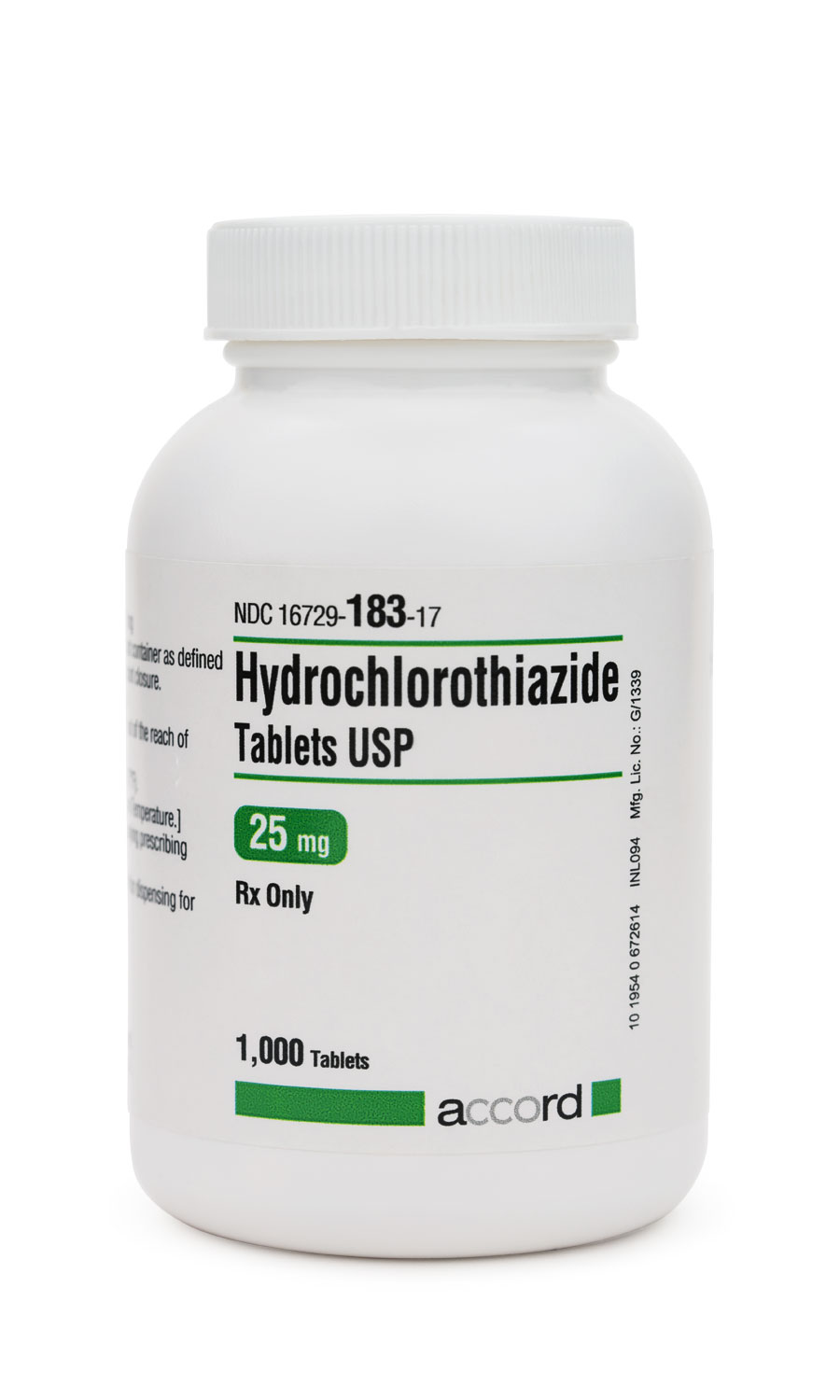
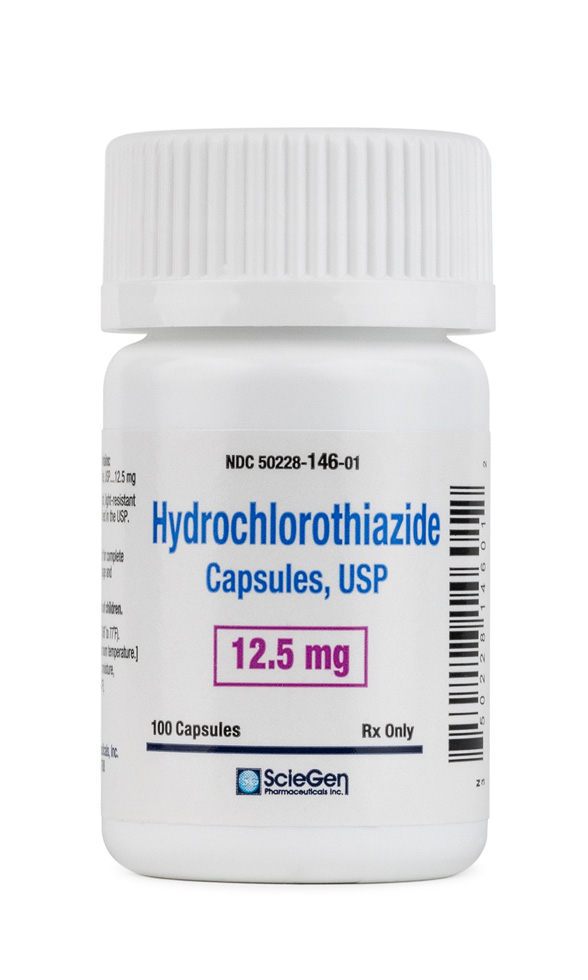
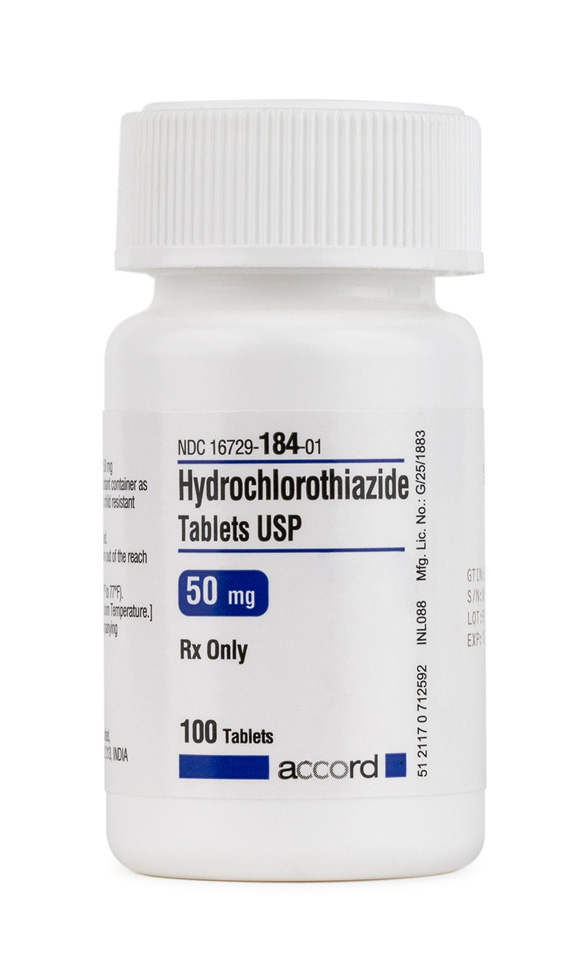
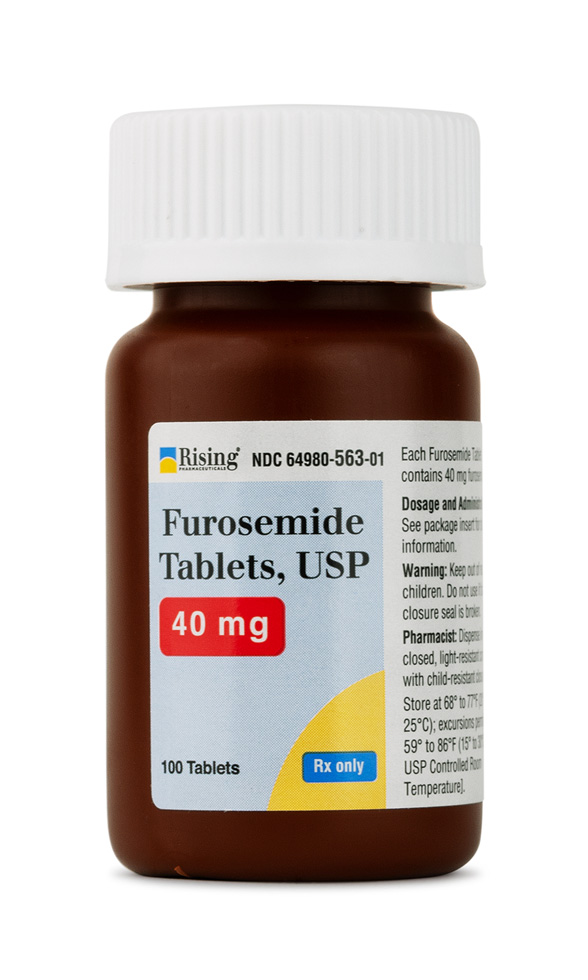 Furosemide Tablets
Furosemide Tablets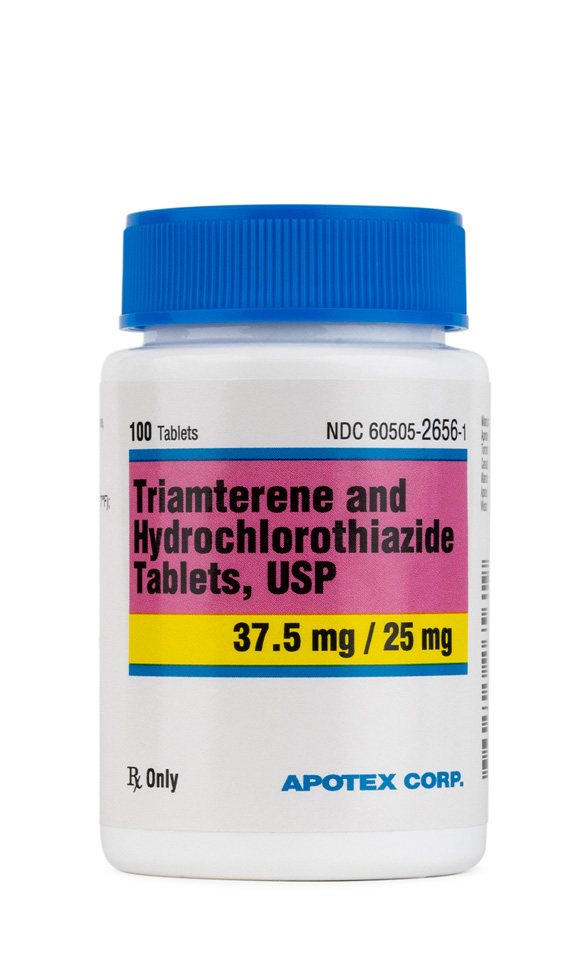 Hydrochlorothiazide / Triamterene Tablets
Hydrochlorothiazide / Triamterene Tablets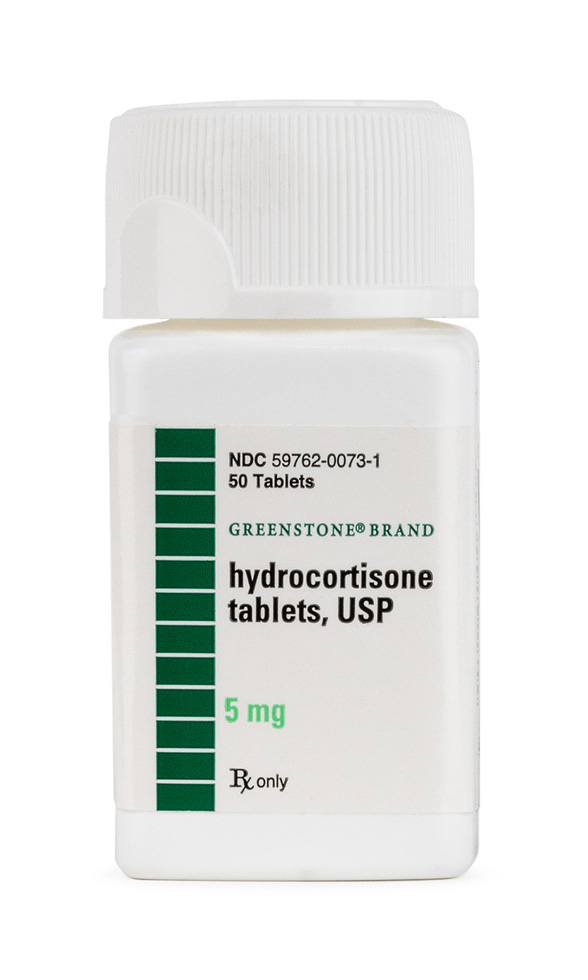 Hydrocortisone Tablets
Hydrocortisone Tablets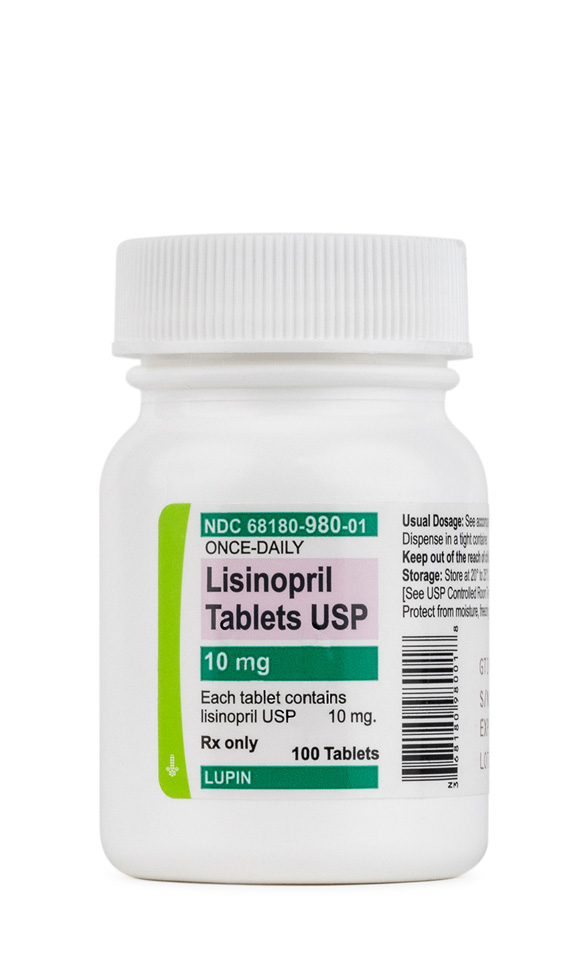 Lisinopril Tablets
Lisinopril Tablets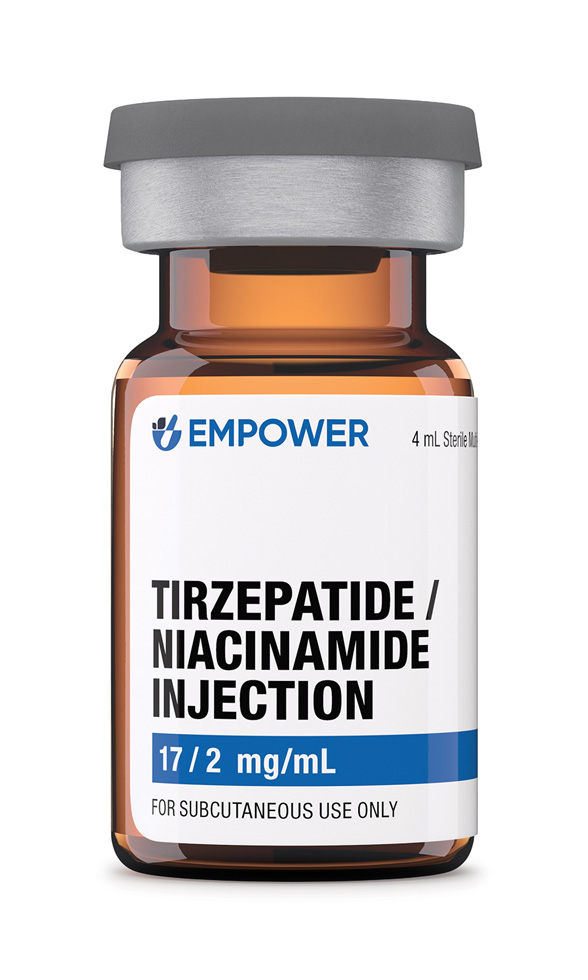 Tirzepatide / Niacinamide Injection
Tirzepatide / Niacinamide Injection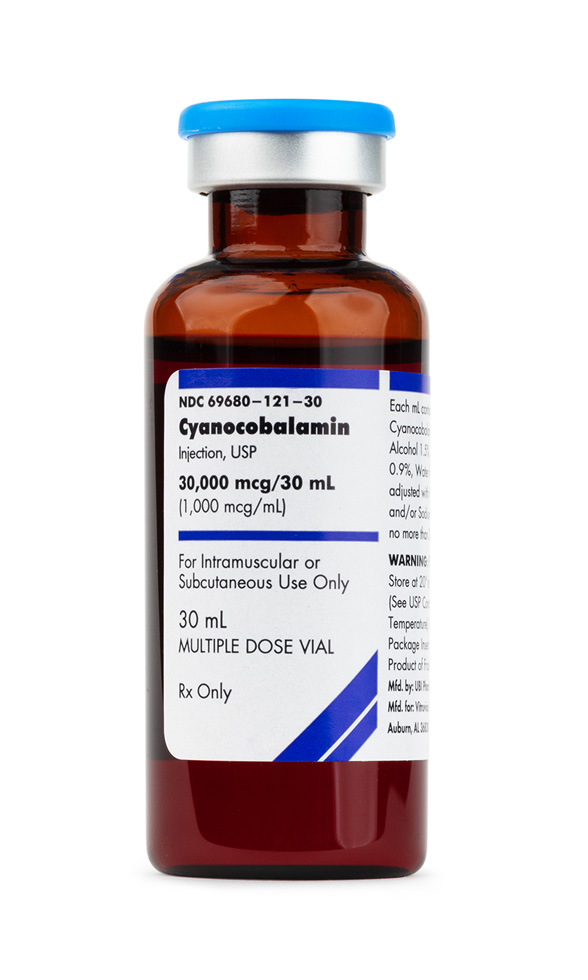 Cyanocobalamin (Vitamin B12) Injection
Cyanocobalamin (Vitamin B12) Injection